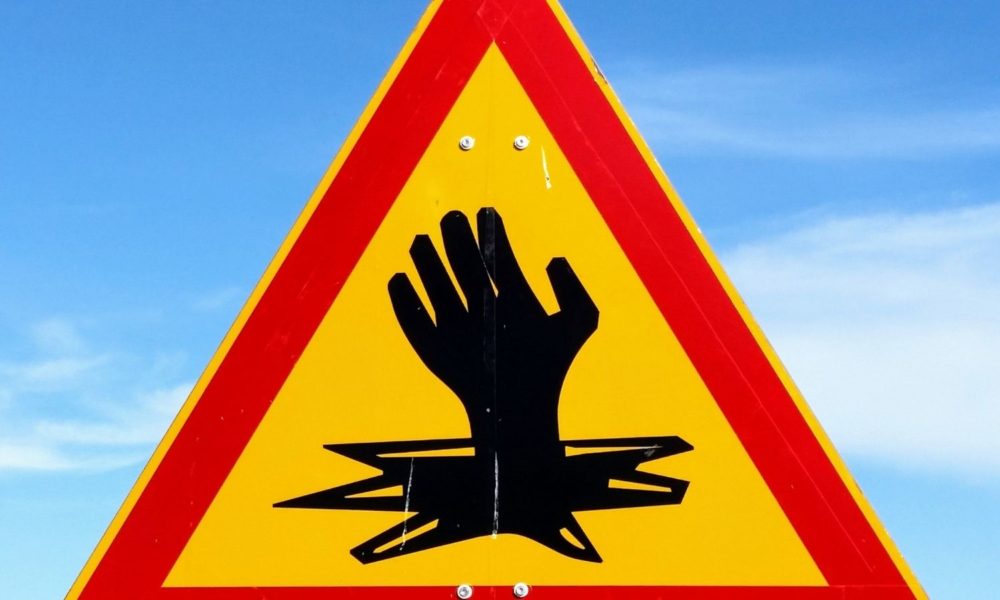Wednesday is “hump day” for many working people with Monday to Friday jobs. As Thursday dawns, their work week is more than half over and some respite may be in sight. For others with different schedules, shifts, multiple jobs, or work that spills over into their so-called off-time, Thursday is just another day.
But this upcoming week, Thursday, April 28, is not just another day. It is Workers Memorial Day, the day each year when people in the United States and around the world pause to recognize, remember, and honor those who died of injuries and illnesses related to their jobs.
Perhaps one of these tragic and largely preventable deaths has hit close to home for you—with a family member, friend, neighbor, or co-worker who went off to work and never came home. But even if you don’t know someone personally who has died on the job, you can be sure someone has who provided you, your family, and community with the goods and services you needed, wanted, or relied on this past year. You may not know them by name but each one was loved and deserves to be remembered. And their loss serves as a reminder of the day’s full slogan: “Remember the Dead: Fight for the Living.”
While the COVID-19 pandemic continues its heavy and disproportionate impact on our nation’s workforce (see, for example, research here, here, here), other occupational fatalities, injuries, and illnesses continue to take a staggering toll as well. Our fight for the living is as important as ever.
Too many worker deaths
Here’s what the data tell us. According to the Census of Fatal Occupational Injuries put out by the Bureau of Labor Statistics (BLS), a worker died every 111 minutes from a work-related injury in 2020. That adds up to a total of 4,764 fatalities—or about 13 workers every day. In the United States alone! And the 2020 BLS fatality statistics numbers don’t include the thousands of workers who died that year from COVID-19 acquired on the job.
The numbers alone should be a wake-up call. Then add to that the horror their families must endure thinking about their loved one’s last moments—falling to their death or killed in an explosion, a trench collapse, an electrocution, an assault, run over by a vehicle, or crushed by heavy machinery. You can get an idea of how workers die on the job every week by reading through the tragic “Weekly Toll” stories on Confined Space.
And the data on non-fatal injuries and illnesses are also appalling. According to the Bureau of Labor Statistics, private industry employers reported 2.7 million non-fatal workplace injuries and illnesses in 2020 that kept workers away from work for a median of 12 days. The employer-reported data on illness cases more than quadrupled to 544,600 cases, up from 127,200 cases in 2019, an increase driven by a nearly 4,000 percent increase in reported respiratory illness cases in 2020.
Plus, research has shown that disease and illness from workplace exposures–to toxic chemicals and physical agents like heat, cold, noise, and vibration–are notoriously under-recognized and under-reported. (See here, here, here,). So, the BLS illness data above are almost surely just the tip of the occupational illness iceberg.
Of the ten occupations accounting for 38 percent of all reported cases by private industry that involved days away from work in 2020, nursing assistants had the highest number of days away with 96,480, an increase of nearly 250 percent) over 2019. Days away from work for registered nurses increased nearly 291 percent. Clearly, our nation’s dedicated and exhausted health care workers bear an enormous illness burden, along with the insults, harassment, threats, and violence of angry, frustrated, scared, and misinformed patients (see for example, here, here, here, here). And they are not the only ones being harassed. Workers who ask people to show their vax cards or to mask-up or who are simply wearing masks themselves are also frequently subject to abuse–such as flight attendants, retail and restaurant workers, transit drivers, and others (here, here, here, here). Researchers are investigating and documenting the prevalence and impacts of this abusive behavior (here, here). These workers deserve our respect and gratitude, not insults and vitriol.
Fight for the living
While we mourn and remember those who have died or who are ill or disabled because of their jobs, we can also be buoyed and inspired by efforts to fight the good fight. Workers, unions, health and safety advocates and professional, and, yes, even some government officials and policymakers are pushing for change. They are calling for safe and healthy working conditions and the enactment and enforcement of regulations, standards, and policies that protect and promote the health and well-being of our nation’s workforce. They are calling for a living wage and decent benefits, for adequate staffing, and for a voice in policies and decisions that affect them.
The pandemic ushered in new and broad visibility to occupational safety and health. The subject became a rallying cry and trigger for worker activism and for action on workplace safety and health. And workers are finding new leverage and options as employers compete for staff, connect with remote workers, and seek ways to lure them back into offices.
Labor unions have always been the bedrock and leading edge of policies and conditions that benefit working people and their families—unionized and non-unionized alike. And the past year has seen some remarkable successes in union organizing–from Starbucks coffee shops across the nation to the recent organizing victory at the Amazon warehouse on Staten Island. With union membership in steady decline over the past several decades, these recent victories signal new life, energy, and new strategies in union organizing campaigns.
We’ve seen the White House issue executive orders on worker organizing and empowerment and worker protection, and a bill in Congress protecting workers’ rights to organize. [Despite little likelihood of passage anytime soon given current Senate rules, it will be an ongoing fight.] Around the country, coalitions are fighting for legislation at the state and local levels, with some significant victories, such as enacting “Just Cause” protections. And The Fight for 15 has brought together low-wage workers in the fast food and other industries to fight for higher wages.
We are all in this together
Too long neglected, occupational health and safety may be at a turning point. Workers Memorial Day on April 28 offers an opportunity to reflect on what each of us—as scientists, public health professionals, engineers, economists, policymakers, activists, community members, and voting constituents—can bring to the fight for science-based protections that will make our workplaces safer.
It will take our collective attention and action to keep the pressure on and the momentum going, but together, we can do this. It’s time. If not now, when?
P.S. You can honor workers by participating in local events. See a listing of events here.

